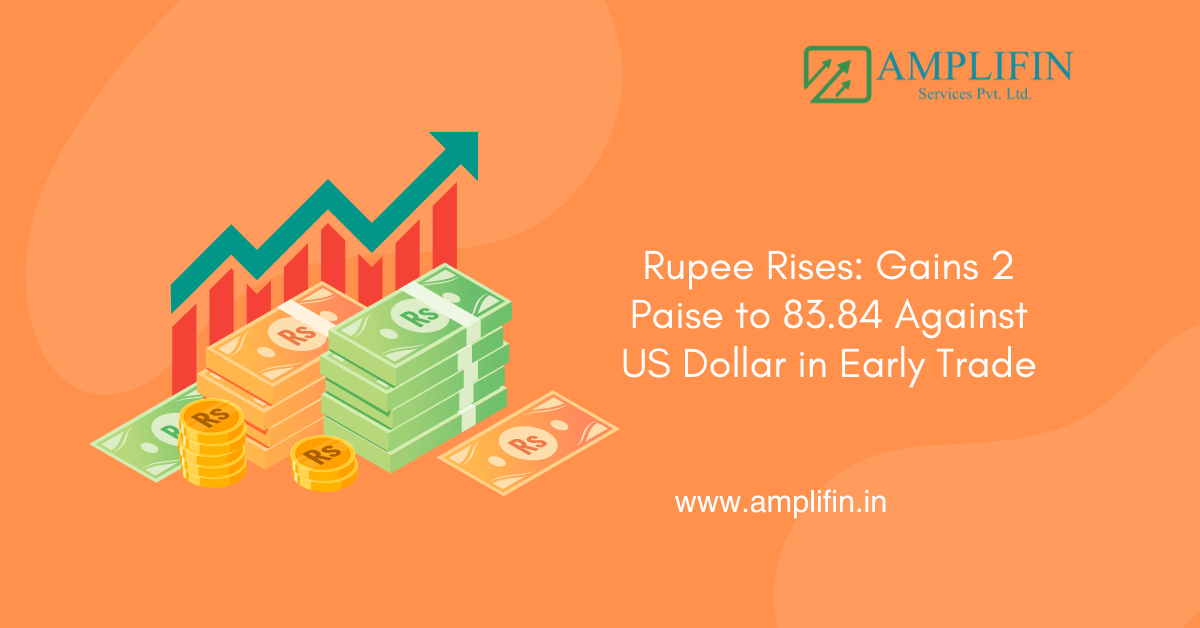Rupee Rises: Gains 2 Paise to 83.84 Against US Dollar in Early Trade
The Indian rupee has shown resilience in the foreign exchange market, registering a modest gain against the US dollar. This article provides a comprehensive analysis of the rupee’s recent performance, exploring the factors influencing its movement and the broader economic implications. Understanding these currency fluctuations is crucial for investors, traders, and businesses engaged in international transactions, making this analysis an essential read for anyone interested in the Indian economy and global financial markets.

Rupee Appreciated by 2 Paise in Early Trade
In early trade, the Indian rupee appreciated by 2 paise to 83.84 against the US dollar, showcasing a slight improvement from its previous close. This minor gain comes amidst a complex interplay of domestic and international economic factors. The interbank foreign exchange market witnessed the local unit opening slightly weak but quickly gaining some ground to turn positive.
Forex traders said the rupee’s performance is closely tied to various economic indicators and market sentiments. The currency continues to hover around the crucial 84-mark against the American currency, a level that has become a significant psychological barrier in recent trading sessions.
Reserve Bank of India’s Role in Currency Stabilization
The Reserve Bank of India (RBI) plays a pivotal role in managing the rupee’s value and stability. As the central bank, its policies and interventions can significantly impact the currency’s performance. In 2024, the RBI’s actions have been particularly scrutinized as it navigates the challenges posed by global economic uncertainties.
The RBI’s efforts to stabilize the rupee include a range of tools, from adjusting interest rates to directly intervening in the forex market. These measures are designed to maintain a balance between supporting economic growth and controlling inflation, both of which have direct implications for the rupee’s value.
Impact of Lower Crude Oil Prices on Rupee’s Performance
One of the key factors supporting the rupee’s recent gains has been the decline in crude oil prices in the international market. As a major oil importer, India’s currency often benefits from lower oil prices, which reduce the country’s import bill and ease pressure on the current account deficit.
The Brent crude, an international benchmark for oil prices, has seen fluctuations that have indirectly influenced the rupee’s value. Forex traders are closely monitoring these price movements, as they can provide insights into potential future trends for the Indian currency. The overseas and lower crude oil prices have been particularly noteworthy in recent trading sessions.
Domestic Equity Market and Its Influence on Rupee
The performance of the domestic equity market, particularly the Sensex and Nifty indices, has a significant impact on the rupee’s value. In recent trading sessions, the Indian stock market has shown a sluggish trend, which has somewhat limited the rupee’s gains.
Despite this, the overall positive sentiment in the domestic equities and fresh foreign fund inflows have provided some support to the local unit. The interplay between equity markets and currency values remains a crucial factor for traders and investors to consider. The Sensex declined 0.05 per cent, while the Nifty showed similar movements, reflecting the current market sentiment.
Foreign Institutional Investors and Capital Flows
Foreign Institutional Investors (FIIs) play a crucial role in determining the rupee’s strength. Their investment decisions can lead to significant capital flows in and out of the country, directly affecting the currency’s value. Recent data suggests that FIIs have turned net sellers in the Indian market, which could potentially put pressure on the rupee.
However, the impact of these outflows has been partially offset by other positive factors. The total value of shares sold by FIIs and the resulting effect on the rupee are closely watched indicators for market participants. In recent trading sessions, FIIs sold shares worth several crore rupees, influencing the currency market dynamics.
Dollar Index and Global Currency Dynamics
The dollar index, which gauges the greenback’s strength against a basket of six currencies, has shown some weakness, indirectly benefiting the rupee. A weaker dollar against major crosses overseas has helped the Indian currency maintain its gains.
This global currency dynamic is an essential factor in understanding the rupee’s performance. Traders and analysts often look at the dollar index as a key indicator of potential movements in emerging market currencies like the rupee. The dollar index stood at 100.38, reflecting a 0.07 per cent decline, which contributed to the rupee’s positive performance.
Future Outlook: Possible Rate Cuts and Economic Indicators
Looking ahead, market participants are eagerly awaiting cues from upcoming economic data and policy decisions. Expectations of possible rate cuts in the future are influencing currency markets globally, including the rupee’s performance.
Amit Pabari, MD of CR Forex Advisors, has noted that while the decline in crude oil prices and a weaker dollar have supported the rupee, expectations of future rate cuts have restricted its rise. This delicate balance of factors will likely continue to shape the rupee’s trajectory in the coming months.
Forex Reserves and Economic Stability
India’s forex reserves play a crucial role in supporting the rupee and maintaining economic stability. Recent data shows that the country’s forex reserves have reached new heights, providing a strong buffer against external shocks.
For the week ended on a recent Friday, India’s forex reserves jumped by USD 2.98 billion to hit an all-time high of USD 645.58 billion, according to RBI data. This increase in reserves enhances the RBI’s ability to intervene in the currency market when necessary, potentially supporting the rupee’s stability.
Rupee’s Performance in Previous Sessions
To put the current gains in perspective, it’s worth noting the rupee’s performance in previous trading sessions. On Monday, the rupee settled higher by 4 paise at 83.92 against the US dollar, supported by a weaker American currency overseas and a slide in crude oil prices.
The local unit opened at 83.89 against the dollar on Monday and settled for the day higher by 4 paise over its previous close. These day-to-day fluctuations highlight the dynamic nature of the currency market and the various factors influencing the rupee’s value.
Key Points to Remember:
- The rupee gained 2 paise to 83.84 against the US dollar in early trade.
- Lower crude oil prices have supported the rupee’s performance in the international market.
- The Reserve Bank of India plays a crucial role in stabilizing the currency through various policy measures.
- Domestic equity markets, particularly Sensex and Nifty, influence the rupee’s value, with recent sluggish trends limiting gains.
- Foreign Institutional Investors’ activities significantly impact capital flows and currency strength, with recent net selling putting pressure on the rupee.
- The dollar index and global currency dynamics are essential factors to watch, with a weaker dollar supporting the rupee.
- Future rate cut expectations are influencing current market sentiments and the rupee’s performance.
- India’s forex reserves have reached an all-time high, providing a strong buffer for economic stability.
- The rupee’s performance in previous sessions, including a 4 paise gain to close at 83.92 against the US dollar on Monday, provides context for current movements.
- The interplay between various economic indicators continues to shape the rupee’s performance in the interbank foreign exchange market.
Understanding these factors and their interrelationships is crucial for anyone involved in international trade, investment, or currency markets. As the global economic landscape continues to evolve, staying informed about the rupee’s performance and its underlying drivers will be key to making sound financial decisions.
